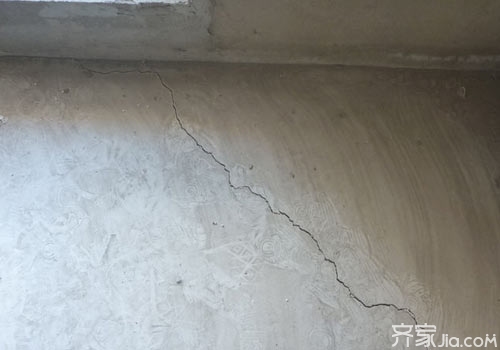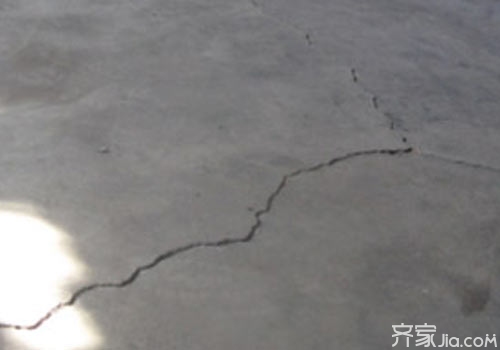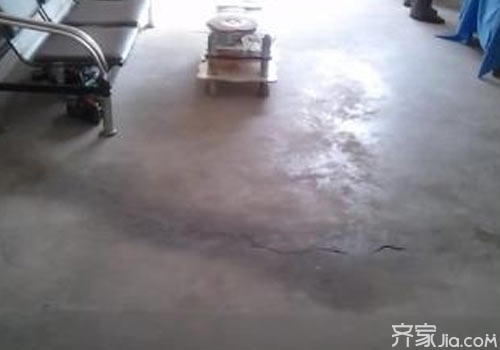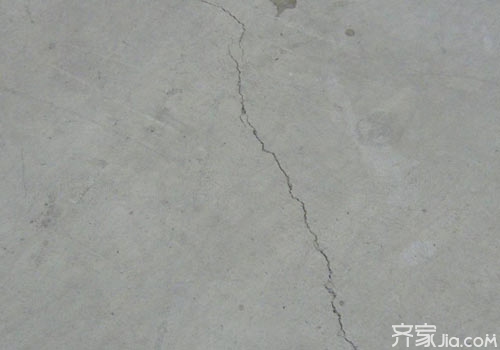Knowledge of building materials put a good 7 off the cement floor crack worry
Cement floor cracks are caused by a number of factors that cause quality problems. Concrete floor cracks cause water seepage and water leakage, which directly endanger the quality of the house, affect the use of functions, and bring undue hardship and loss to the user. To do this, cement mortar must be well-constructed before construction to prevent it from happening. With Xiao Bian look below to prevent cracks in the cement floor need to put it off.

Prevent cracks on the concrete floor
First, the good raw materials
1. Cement: It is necessary to use the Portland Cement or Ordinary Portland Cement that has been retested for stability. Because the contraction rate of these two kinds of cement is small, the shrinkage rate of the cement mortar in the hardening process is also small. But these two kinds of cement can never be mixed. It is also forbidden to use expired, damp-cemented cement. When the stability of the cement is unqualified, the free calcium oxide and magnesium oxide are slowly hydrated in the coagulation process. After the cement mortar or cement concrete is hardened, the free substance continues to hydrate, and the volume of the solid phase increases by 2-2.5 times. It will destroy the hardened structure and cause cracks. Ground engineering should not use slag portland cement, fly ash portland cement, and pozzolanic portland cement, which have low early strength and poor wear resistance.
2. Sand: Use clean medium coarse sand with less than 3% clay content. Because the shrinkage and shrinkage values ​​of the mortar mixed with fine sand and mud sand during hardening are relatively large, the ground is prone to shrinkage cracks.
Second, the grassroots clearance and wet clearance
1. Base layer: refers to the structural layer under the surface layer, including the filling layer, isolation layer, leveling layer, cushion layer and foundation soil.
2. Primary treatment: Before the construction of the ground works, the grassroots must be carefully handled. The quality of the inspection base, including material requirements, strength, thickness, surface flatness and slope, must meet the design requirements. If there are defects, they must be corrected and qualified before they can apply for visas. The quality of the grass can directly affect the quality of the upper surface layer.
3. Clean up the grassroots: remove rubbish on the base level, scrape off the adhered mud, mortar, and the free glassy film on the cement-based layer, clean the dust and grease on the clean surface; before the construction, there should be no water on the surface of the base. . This is the key to ensuring the quality of ground engineering.
4. Basement Wetting: The adhesion to the upper cement mortar or concrete structural layer is critical. When constructing on the dry base, the dry base layer absorbs the moisture in the cement mortar or cement concrete layer, which affects the continuous hydration and hardening of the cement, so that the adhesion between the base layer and the upper structural layer is reduced; when the surface layer is dry When shrinking and shrinking, separation occurs from the base layer and shelling and cracking occur. The spray should be sprayed on the clean base surface 1-2 days before the surface layer is applied, and the showering water should be kept moist and dry, but there should be no accumulation of water, so that the base level can reach dry saturation. This is the key to making the surface layer firmly bonded to the next layer without hollowing and cracks.

5. Apply pipelines: The ground pipeline should be laid as far as possible in the grass roots. If some of the pipes are exposed at the base level, the surface mortar at the site will be too thin, the water loss will be quicker, and cracks will be easily generated. For example, if the water and electricity pre-embedded pipelines are slightly exposed from the base level, a layer of cement mortar shall be laid along the pipeline. A steel wire mesh with a width of more than 500 mm or a steel mesh with a diameter of 4 mm prevents cracks.
Third, master the construction of the ambient temperature
Surface construction has a large surface area, and the best construction environment temperature is 5-35 degrees Celsius. If the temperature is lower than 5 degrees Celsius, the doors and windows shall be closed in time to prevent the surface layer from freezing in the early stage and causing sanding.
Fourth, the good combination of clearance
1. Bonding layer: It refers to the intermediate layer connected with the surface layer and the next structural layer.
2. Construction requirements: Before the surface layer is applied, a layer of cement paste is first applied as a cement layer at the base layer to enhance the bonding strength between the surface layer and the base layer. However, the bonding layer often acts as an isolation due to improper construction.
(1) The premature grout has hardened, and then the cement mortar surface is laid, which can only play a role in isolation. Therefore, it is necessary to remove the sweeper and re-apply a layer of qualified cement slurry before laying the surface cement mortar.
(2) It is not allowed to water the base after watering first or to dry the cement first (water purging method). Because the clear water and the cement slurry without sweeping play a role in isolation, the surface layer is easy to produce shelling. And crack phenomenon.
(3) Cement slurry with a ratio of water to cement of 0.4-0.5 must be used according to the degree of dryness and wetness of the grassroots and the weather conditions. The required amount of water and cement mixed pure cement slurry brushing in the base level (not to be painted) on the construction, after about 30 minutes to lay cement mortar surface layer.
Fifth, strictly control the mix ratio of cement mortar

1. The proportion of general ground cement mortar should be controlled within 0.4, and the consistency should not exceed 55mm. The cement mortar ratio of each plate is correct, and the water consumption is accurate, the consistency of the mortar is the same, the strength is the same, and the shrinkage is uniform.
2. If water is added at random to make the mortar use excessive water, the cement mortar will have too much water evaporation and volume shrinkage after hardening, so that the strength of the ground surface layer will be relatively low, not wear-resistant, and shrinkage and shrinkage cracks will easily occur.
3. The test data shows that the cement mortar has the same mixing ratio and its strength is related to the consistency (ie the amount of water consumption). If the consistency is increased from 30mm to 70mm, the compressive strength is reduced by about 30%; Reduce floor surface strength, hardness and abrasion resistance.
Sixth, master ground surface compaction light wipe off
Plastering of cement mortar and cement concrete surface is generally carried out in three stages.
1. For the first time, the surface of the cement mortar shall be paved, and the scraping rule shall be used to screed and compact the squeezing surface. In general, no construction joints shall be left in the room, and the surface flatness must be grasped. It should be smoothed with a trowel or a wooden trowel after the cement mortar is filled with water, and it is required to be even and dense, and the sand holes, pits, and footprints on the surface should be polished and leveled.
2, the second time the smear should be in the initial setting, that is, when adults stand up and leave about 5mm deep footprints, use iron trowels to wipe light or use a trowel to wipe light. Mainly remove surface bubbles. Scaling the surface layer should be free of trowel, footprints and trachoma and other defects.
3, the third time calendering time before the final setting of the cement, that is, with your finger up when there is no fingerprint printing. Use iron trowels to apply pressure for a third time. When the pressure is applied, apply a little more force. Smooth the surface layer and press light. The surface is free of blisters and smears to further occlude the pores. Retreating from the interior wall to the doorway is the key to ensuring a smooth and smooth surface.
Seventh, the cement mortar surface protection
After completion of construction, the doors and windows shall be closed for 24 hours in a timely manner and shall be wetted with water or water for at least 7 days. During the maintenance period, it is forbidden to step on the personnel, and it is also forbidden to carry out other types of work on the ground, stacking materials, and other heavy objects. Keep warm work at low temperatures. If it is poorly conserved, used early or frozen, it can cause cracks and sanding on the ground.

To sum up, only from the aspects of construction materials, construction process, and maintenance in the later stage can we ensure that the cement mortar ground will not have the quality problems such as dusting from the ground, ground cracks, and empty ground.
Editor's summary: The relevant information on preventing concrete cracks on the ground should be introduced here. I hope this article will be helpful to everyone. If you still have something you don't understand, you can leave a message to Xiaobian at the bottom. We will answer your questions as soon as possible.
Ground acceptance brick
Solar Powered Pump,Solar Water Pump,Solar Pump,Solar Powered Water Pump
Wuxi Shengda Yukun Energy Development co.,Ltd , https://www.xlite-solarlight.com